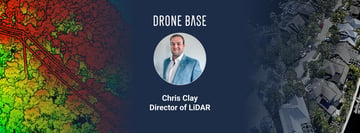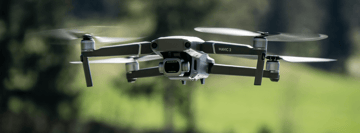If you strip away the selfie modes and the sophisticated payloads, recreational and enterprise drone pilots fundamentally want the same things: a platform that’s reliable, easy to use, safe, and capable of producing high-quality results.
That partly explains why consumer drones continue to be put to work in all manner of industries. Many fulfill all the criteria above, which is both testament to the quality of certain manufacturers and the only thing that really matters when selecting hardware.
It’s also a factor in why manufacturers such as DJI and Parrot have started to focus on platforms that can shift to serve both markets with minor adaptations, like the Mavic 2 and the Anafi. It makes sense to focus on flexible platforms that can ultimately be used by anyone.
But it’s not just a case of consumer drones fulfilling the main functions enterprise pilots require. There’s also the question of timing. Consumer drones - particularly from DJI - have set the standard for what is possible, providing the proof of concept for technologies that have then been applied to industry-specific platforms.
Without mass-market consumer drone sales and the R&D enabled by that revenue, we might not be at the stage we are today, with aerial technology saving lives on a regular basis.
Here are a few reasons why the commercial drone industry owes much to the innovation of consumer companies.
The consumer industry as a testing ground
Both DJI and Parrot started out with a focus on consumer drones. But for obvious reasons, the commercial market and enterprise applications were always going to be lucrative in the long term.
However, regulations - or rather the lack of a solid regulatory framework - meant the consumer market was initially the best avenue for innovating drone technology. That coincided with the fact that there was always going to be mass-market demand for products that would take photography to new heights.
All of which has allowed the consumer drone industry to be the perfect testing ground for a number of technologies, from autonomous flight modes to image stabilization to obstacle avoidance.
Mass market sales push emerging technology forward
In April 2018, DJI published a report highlighting incidents across the previous year in which at least 65 people were rescued using drones.
Those figures were taken from news reports and adoption has grown among enterprise and public safety users since then, so current numbers are likely to be much higher.
But among the details of that report was an important point, outlining DJI’s belief that there is a direct link between the evolution of consumer drones and the lifesaving technology the company now develops for first responders.
The report stresses how important those mass market, recreational sales are to DJI’s continued efforts in the enterprise space. “If regulatory policies limit the availability of drones to the general public, then public safety agencies will be less likely to benefit from the innovative technology, economies of scale, and competitive pricing created by a healthy market for consumer drones,” it says.
Consumer sales and a growing base of drone enthusiasts around the world are providing the financial platform for companies like DJI to continue to invest in research and development.
Ultimately, that investment is going to ensure drone technology continues to advance, improving the reputation of drones and saving lives in the process.




.png?width=360&name=Banner%20Templates%20(6).png)
